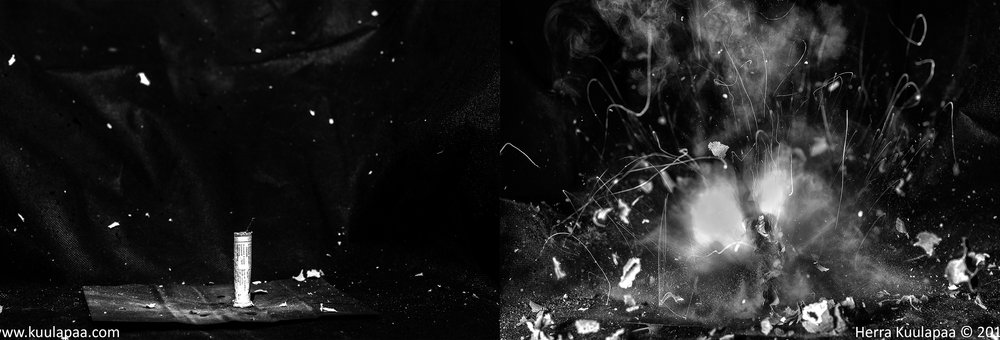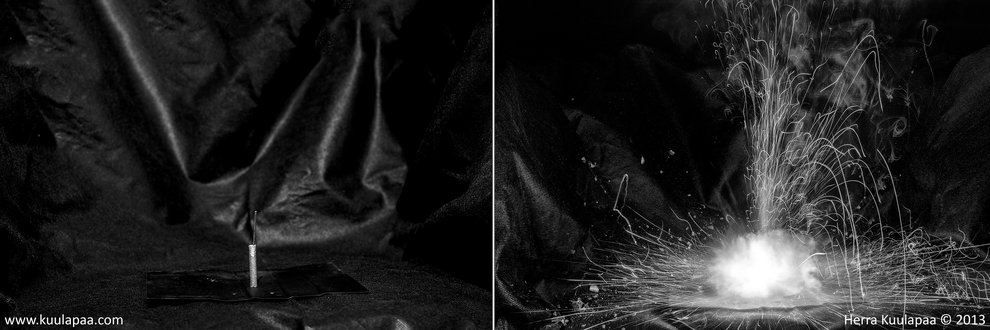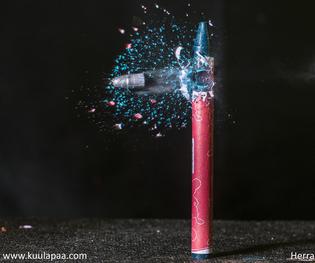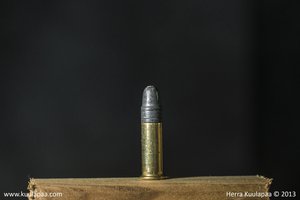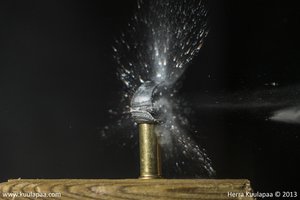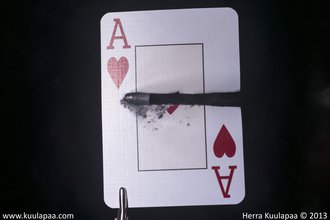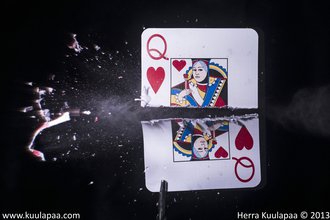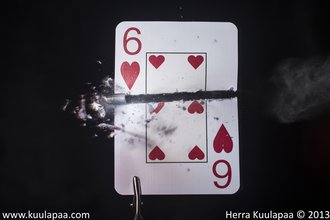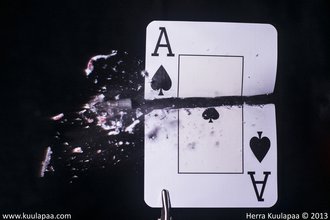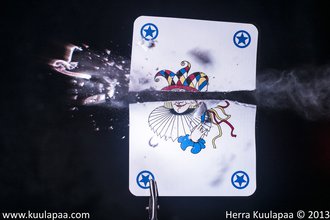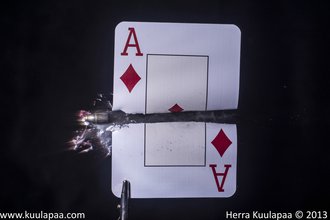Herra Kuulapaa
High Speed Ballistics Photography
This site emphasizes importance of firearm safety and proper handling of firearms. Weapons are not toys and they should never be considered neither treated as such. We do not participate in any communication attempts involving suspicious politics, racism or general hate talk. If you agree please continue and enjoy our work!
16. May 2014 - The Long waited shotgun cartridge review

It’s finally here! The many times wished and long waited shotgun cartridge review. During the last year we have been asked many times to do a shotgun cartridge review. With the support of several companies it finally came possible. Before going into test itself I’d like to thank following stakeholders for their valuable support:
Aseliike Markus Remes Oy, Eräliike Riistamaa Oy, Aseliike Ammo Oy for sponsored ammunition and Helsinki Shooting club for lending their Winchester 1300 pump action shotgun.
We evaluated several methods for the review and ended up dividing the test into two phases. In first phase we focus on phenomena happening immediately after shots leave the barrel and fly approx 1 meter. Second phase, which will be coming at some time later (after setting up the study plan), we will look into couple of cartridges for their inflight shotgroup dispersion. In other words how fast shots move apart. Reason we decided to divide the review was the fact that cartridges had very different barrel times and we experienced relatively large variance in flight times to certain position in the air. This may not sound a big thing but with ten cartridges it created an issue because we need to calibrate our setup for each and every cartridge individually.
We selected wide variety of shot sizes to our review ranging from 2mm trap shot to 8,43mm buckshot. And as a bonus we have two slugs as well. Traditional lead slug is S&B Practical Slug and a bit more complex is Brenneke Super Sabot, which is designed to change shape during the flight (see later pictures).
On the left you can see the size differences of shots. Please note that the slugs are representative only and taken from separate image so their size may not be 100% comparable to shots. They’are comparable to each other though.
Tested Cartridges are visible below and they were:
- Rio Target Load 2mm
- S&B Trap Extra 2,4 mm
- Remes Champion 3mm
- Eley Alphamax+ Magnum 3,5mm
- S&B Mini Magnum 4mm
- S&B Red and Black 4,5mm
- S&B Practical Slug 32g
- Brenneke Super Sabot 31,8g
- S&B Buckshot 1 (7,62mm)
- S&B Magnum Buckshot 00 (8,43mm)
The total shot amount is also visible in the pictures below. Smaller shot size naturally makes it possible to fit a greater amount of individual shots in cartridge.
4,5 mm S&B and buckshots were built with fiber wads and powder cards instead of plastic wads, which are not visible in pictures.
Rio Target Load - 2,4mm shots
Rio Target Load with 2mm shots was selected to setup a base line and it also served as a calibration cartridge. It has a rather long spring type wad compared to other cartridges and we noticed that in some images it looked little bit tilted in midair. Most likely because of the spring element. Shots are very small in this load and they stay nicely in a wad cup until flown approx 50cm. Then the cup starts to open rapidly by air resistance pushing cup walls outwards. After walls have tilted backwards the shotgroup separates from the wad. Because of small weight and high surface area of the wad its velocity is decreased rapidly. As an interesting detail wads usually tumble after separation and fly even rest of the time backwards due to smaller air resistance. Same time shots retain their momentum much better and they are escaping the wad with increasing relative velocity.
At close distance the shot group stays very well together. After 5 meters however the group has already spread out and flies as wide as a man's palm with single shots ranging to tip of the fingers (depending of course on cartridge and choke used). In this review we didn't test any spread patterns but in the picture right hand side you can see a test shot at 2 meters from the barrel. Picture is out of focus and boosted heavily but an interesting effect can be seen in it. Although shots stay 99% in one tight group, even at close range we can see two shots clearly separated from the group. They are even further away than the wad. They may have been slingshot away by tumbling wad. These heavily scattered individual shots pose a clear danger when hunting with tight shooting sectors. If the separation is like this at 2m then what it would be at 20m?
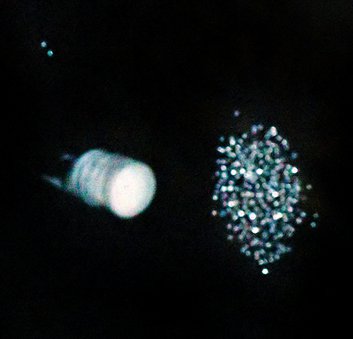
Stereoscopic 3D images of Rio Target Load 2mm
If you are interested really to see how muzzle blast has formed or how wad cup opens then the stereoscopic 3D images are the way to view those phenomenon. Pictures are optimized for cross eye viewing method so you can view them without any 3D glasses or anything. Instructions and training image can be found at: http://www.starosta.com/3dshowcase/ihelp.html
Sellier & Bellot Trap Extra - 2,4mm shots
Sellier & Bellot Trap Extra 2,4mm is loaded with almost identical shot size to Rio Target Load. Shot diameter differs only about half a millimeter so we are talking of very similar cartridge. These two cartridges also had almost identical recoil feeling. Biggest difference between them is the wad structure. Where Rio had a spring type wad the S&B has a much shorter one with only small flex. Cup seems to stay closed slightly longer than in Rio and it starts to open at same point where Rio has already separated.
In the 3D images and especially last image you can see how much there are powder particles and other residue flying out of the barrel.
Stereoscopic 3D images of Sellier & Bellot Trap Extra 2,4mm
Remes Champion - 3mm shots
Remes Champion is a 30 years anniversary round from Finnish company Aseliike Markus Remes Oy. It has been manufactured by Sellier & Bellot and has 3mm shot size being little bit bigger from previous cartridges. Wad is natually identical to S&B but a powder is slightly different to other cartridges. It feels to have more punch on shoulder and it sprays more burning residue than previous. It also has a little bit longer barrel time than previous cartridges, which in together with the burning powder residue seems to imply to slower powder burn rate. Slower powder may also be the reason for larger blast glow visible in the images.
Those of you able to view and enjoy stereo 3D images should especially look that middle picture below. In that you can clearly see both bubble like gas structure projectile has pushed away from the barrel. Bubble gets punctured when the shot group flies forward. In the same picture you can also see the wad cup starting to open due both air resistance and shot group expansion. Notice the amount of particles.
Stereoscopic 3D images of Remes Champion
Eley Alphamax+ Magnum - 3,5mm shots
Eley Alphamax+ magnum load has a 42g of 3,5mm shots. It feels proper magnum but it lacks light up muzzle blast like the Remes Anniversary above or S&B Magnum below. It seems that wad cup stays closed little bit longer than of S&B. It's most likely not anything meaningfull in the end though. Stereoscopic 3D images reveal interesting flex of the wad. It looks slightly tilted when cup has just left the barrel. There is also a clearly visible residue stream following wad cup, which is easily visible in last picture.
Stereoscopic 3D images of Eley Alphamax+ Magnum
Sellier & Bellot Mini Magnum - 4mm shots
Sellier & Bellot Magnum has 4mm shots and same kind of wad cup with Extra Trap. It however packs much more punch being a magnum load. Unlike Eley Alphamax+ the S&B Magnum has a visible glowing muzzle blast (or flash). We have reduced overall brigness of the flash in these images but still it glows really well.
Stereoscopic 3D images of Sellier & Bellot Magnum
S&B Red and Black - 4,5mm shots
Sellier & Bellot Red and Black is an old style paper cartridge with fiber wad. It has relatively large shots of 4,5mm diameter. First thing to notice is the completely different blast formation. The other cartridges so far have a nearly transparent blast cloud but Red&Black has almost white blast coming out of the barrel. It's important to note that we are looking at the phenomena lasting only couple milliseconds and there is no white cloud visible to the shooter in real life.
Another interesting observation is that there is rather big load of residue and debris flying both inside and ahead the blast. That is most likely the remains of fiber wad, powder separation card and other nonplastic material. Once again we encourage you to view stereoscopic 3D images to really see how the blast is forming in couple hundred microsecond interwals. Especially in last images you can spot fibre wad/powder card remains in the middle of the blast.
For some reason we were not able to capture either individual shots or the shot group in the pictures. It is possible that shots are covered by the blast, which may be a result of powder type and fibre wad/powder card. Interesting effect with the Red&Black cartridge is the missing gas bubble that projectile pushes out from the barrel. It is possible that the fiber wad disintegrates during acceleration and pushes shot group apart during the barrel time. Shots travel the barrel slightly separated and gas can expand rushing forward between them. When shots exit the barrel they are already covered in blast unlike happens with much tighter plastic wad cup. We can see a similar behavior with buckshots below and they're also made with fiber wads.
This however is just a speculation and if you have more information please feel free to contact us so we can revise possible incorrect info.
Stereoscopic 3D images of S&B Red&Black
Sellier & Bellot Practical Slug 32g
In addition to regular shot cartridges we decided to photograph couple shotgun slugs as well to see how they behave. Sellier & Bellot Practical Slug weighting 32g is representing full lead slug in this review. At this point you may want to check the shape of unshot slug above. It has nice fin like grooves on outer edges to create riffling like stabilizing effect on the slug while it flies through air. It also has attached plastic wad, which flies with the slug. Although slug has hollow structure the attached wad makes the rear aerodynamically flat.
First we can see that the slug/wad combination fits barrel very good making a good seal for burning gasses accelerating flug through the barrel. Slug pushes air column out of the barrel. Slug is also flying ahead of the muzzle blast all the time. But the most interesting thing is not the blast itself but the slug itself and especially the shape of it. Now check the shape of the flying slug and compare it to unshot one. You can see a clear change in shape of the slug. Finns are no longer reaching the base of the slug and it looks like squeezed through cylinder - like it actually has done.
Look next at the stereoscopic 3D images and especially the last macro shot of the slug. in the Image you'll see big amout of lead particles shaved off the slug flying around it. This is actually expected due to deformation of slug but still it is surprising how much loose lead particles accompany the it. In the regular shotgun shot images we cannot say anything about the deformation of shots but for the slug it's clear that deformation happens during the barrel time. For this reason it may not be the most vice decision to shoot slugs on indoor shooting ranges - If shooting shotguns indoors is actually ever vice at all.
Do you remember the flat base of the slug? A clear turbulence effect can be seen behind the slug and this most likely has clear effect on its ballistics characteristics. Flat end creates effective low pressure area behind the slug and decreases the slug velocity by ncreasing drag.
Stereoscopic 3D images of Sellier & Bellot Practical Slug
Brenneke Super Sabot - 31,8g
Brenneke Super Sabot is the other slug we tested in this review. It weights almost the same as Practical slug above but it has very different design idea behind it. It's actually a true shape changing slug, by purpose. It has a aluminium core, brass frame and it's packed in a sabot wad. When you shoot it the round exits the barrel in sabot cover and after it has flown approx one meter the sabot wad opens. After that sabot wad is separated from projectile, which then continues to the target. Interesting? Even more interesting things happens though:
The slug or should we say the bullet does not look same anymore. It has transformed. Slug has a piston like function, which pushes pointy inside forward when cartridge is fired. One can also argue that it's actually outer shell that is moved backwards as heavier element in relation to core but in the end slug goes through transformation to more aerodynamic form. A true shotgun bullet then. Manufacturer states that improved accuracy is gained this way.
Stereoscopic 3D images of Brenneke Super Sabot
Sellier & Bellot Buckshot 1 - 7,62mm shots
Sellier & Bellot Buckshot size 1 (7,62mm shots) is first of the two buckshots in this review. Like Sellier & Bellot Red&Black it has fiber wad and powder card. Cartridge itself is however made out of plastic so there is a clear difference to Red&Black. It has reduced amount of fiber depris int he air.
What comes perhaps to the fiber wad is that for the same unknown reason catching the shots failed with this cartridge as well. First image has been cropped heavily but shots were not visible in whole picture either. There is a powder card flying in the last image, which is indicating strongly that shots are already far away at that point. Blast is massive.
More investigation is needed to solve the issue of missing shots though and we may return to this later.
Stereoscopic 3D of S&B Buckshot size 1:
Sellier & Bellot - Magnum Buckshot 00 - 8,43mm shots
The biggest and the baddest in this review is the Sellier & Bellot Magnum Buckshot size 00 meaning huge 8,43mm balls. We did not like it at all. It felt like getting hit in the head with a shovel ;) And after only two shots the whole indoor range was filled with not so good tasting smoke. So, do not shoot these indoors! And actually you shouldn't shoot these at all if you don't want to absolutely kill the buck or hog.
In the images you can see spectacular muzzle blast or actually it was an explosion with flash effect. Muzzle flash brightness has been decraesed heavily in those images to recover other details of the blast. In the picture you can see similar powder card flying in the air than in earlier buckshot so shots were most likely left the image when images were taken. More investigation will be done on this terrifying load as well.
Stereoscopic 3D image of Sellier & Bellot - Magnum Buckshot 00 - 8,43mm shots
End of part 1
Thank you for reading this far. High speed ballistics photography and all the work needed before pictures are available on this site requires massive amount of effort. We are happy to do it though to provide interesting information for hunters and shooters. If you spot any errors or wish some information revised or have any suggestions for future tests then please feel free to contact us.
Please also spread the word if you like our work :)
4. October 2013 - Colorful explosions
I've received a couple of emails asking why are the firecracker pictures black and white? There is a reason for that. I believe these color images are so overwhelming rich in fine details and strong colors that they are somehow difficult to understand. Don't get me wrong though. They look awesome but for some natural reason it's slightly hard for brains to interpret all that is happening in them. Yes, I may be slightly simple person but I think you notice it too. This is actually a very important notion because what we're planning to do next may be visually too complex to comprehend. Big words, I know.
But wait and you'll see I mean ;)
1. October 2013 - Bigger but not so bright one
This is the second test of firecracker high speed precision photography. Now the firecracker is slightly bigger and more traditional one meaning that there is no flash powder but instead just good old black powder. This helps us taking actual high speed photo of the explosion. Unlike previous small and bright flash bang now we're dealing only bang with only minor flames. Bad news are that these won't go off instantly but there is increasing high pressure fizz first lasting few milliseconds and this makes timing really difficult. We can detect the pressure change but it's hard to separate fizz from the bang. We also need to have some pressure in the air so imminent bursting photo is quite difficult to time.
But what we can do is get picture just after cracker has burst open and then there is spectacular amount of things happening. Above is high resolution picture of that event. I don't even try to explain all that but just mentioning one thing is that there is clay dust and nice amount fragments flying around. Be sure to click picture big on your screen.
30. September 2013 - Let's try something different / small firecrackers
This is something many of you have emailed me about. I got some firecrackers from fellow shooter to be photographed.I figured these small ones to be perfect subjects due to their small size and therefore minimal obstructing flash and flame. Well, my theory didn't meet reality this time. Apparently there was some kind of magnesium powder in them and that resulted bright flash and big blast of burning stuff flying around. That flash was was so bright that it hid all the small details of explosion.
To be continued...
24. September 2013 - Pen is mightier or is it? (yes, I know it's a crayon;)
Here is some material made just for fun and as a test. I confiscated some crayons from my kids and made couple of test shots. I don't even pretend it to be some kind of science. Just a test :)
6. August 2013 – Spotting bullet in flight with own eyes

During my experiments I have noticed many interesting things on bullets and their behavior but perhaps most fascinating is that human eye is able to see flying bullet in mid air. By this I don’t mean anything like calling shots in long range by pressure distortion trail caused by bullets but actually seeing them stopped while their flight. This of course requires some technical assistance in form of very short burst of light.
What I found out during air gun tests to my surprise was that I could see frame in my eyes before looking at camera screen. Eye is so sensitive and yet so slow that frame stayed in retinal rods long enough for brains to comprehend it. Surely 190 m/s or 620 fps bullet is so slow that it doesn’t mean much right? I though so. But same thing repeated also with .22LR and 9mm. Fastest .22LR shots were over 400 m/s or 1300 fps. Impressive isn’t it? Not yet, because I’m telling you that you can see .308 and .223Rem bullets as well in right conditions. This is impressive! So, who would guessed your eye is so good. Even very high velocity like 970 m/s or 3200 fps isn’t too fast for your eyes and lump of fatty tissue behind them.
1. August 2013 - Trick shot
I once heard a story about marksman, who could hit tip of the cartridge 15 meters (~yards) away with handgun and even with single shot. Story didn't specify what handgun it was or what kind of cartridge was hit. I have tested that few times placing brass on top of the pole and trying to hit it, rather close I must admit. It is doable but takes much more than single shot.
Now things get interesting; what happens if you actually manage hitting cartridge at tip of it? It's probably not very wise thing to do and to minimize risks I rather start small scale so .22LR it is. Picture has been taken on exact moment bullet is in middle of the stationary one. Not much science or wisdom in these shots but they look good so enjoy.
Word of warning: Don't try this without proper shielding. Some high speed lead is directed downwards through casing and it most likely compresses powder and primer to ignition point. This then causes explosion of casing and brass fragmentation.
28. July 2013 - Deck of cards
Splitting card in half by shooting is popular trick performed by exhibition shooters. But what really happens at that exact moment? Well, net is of course half full by these images but usually really small and what I try to do differently this time is to provide you high resolution pictures. If you fancy them enough you can email me because I have even higher res ones approx 4000x3000 pixels of size. It should make nice picture to your wall if you like.
Anyway, these pictures didn't come easy. Well, to be honest the right ones needed only pulling the trigger but I wasted half of the deck making these. It was great fun though and very educating experience. I must say that I really appreciate real marksmans who are able to take shot like this at longer distances.
Are these still only recreational, I think not because we can learn something from them. One thing is that bullet is actually affected quite much by the card. .22LR is very light weight and relatively low speed ammunition with not so gear kinetic energy. This is quite well noticed in joker picture. Bullet is heavily tilted after card split. Also top row Ace of hearts have bullet climbing up. Well, line of fire is little tilted but you know what I mean.
You may notice that bullets look different. Ace of diamonds was shot by Remington yellow jacket, which has much higher velocity (1500fps or 450m/s) than dark bullet CCI standard and silver colored Federal Champion.
Enjoy, I have more stuff coming up soon :)
Copyright 2015 © All Rights Reserved by Herra Kuulapaa



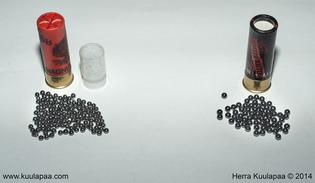
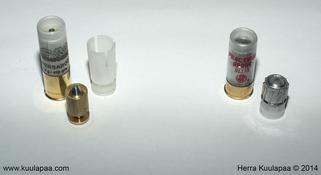
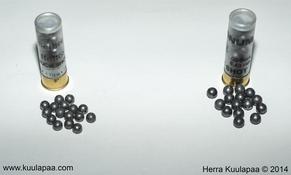
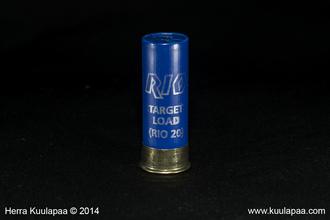
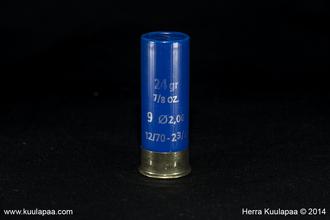
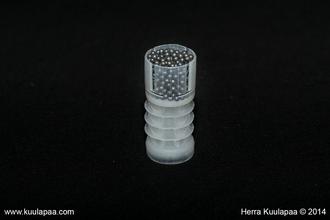
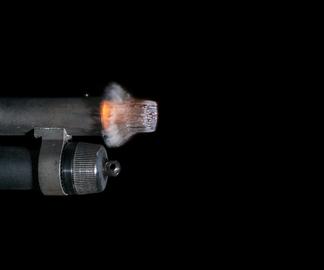
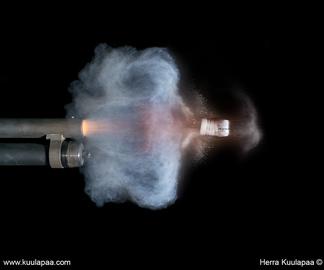
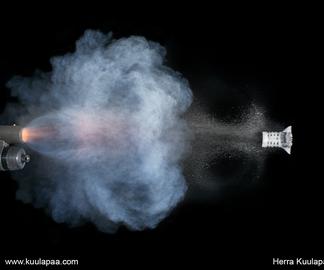
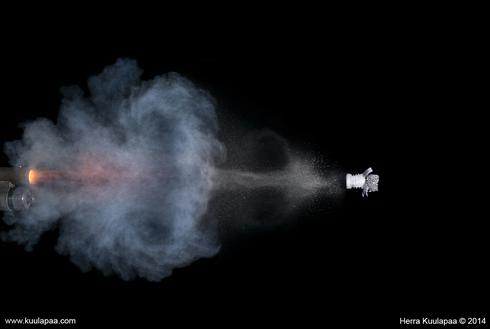
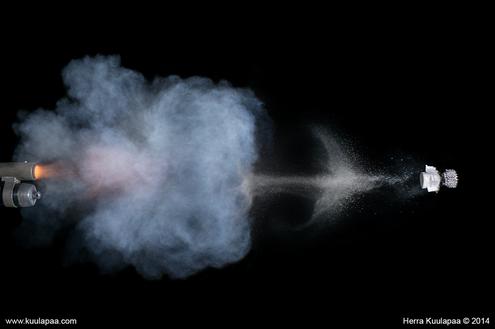
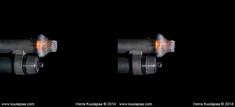
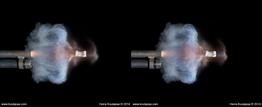

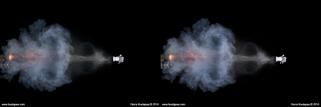


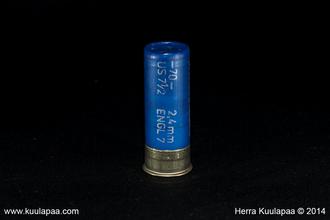
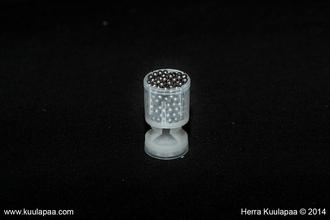
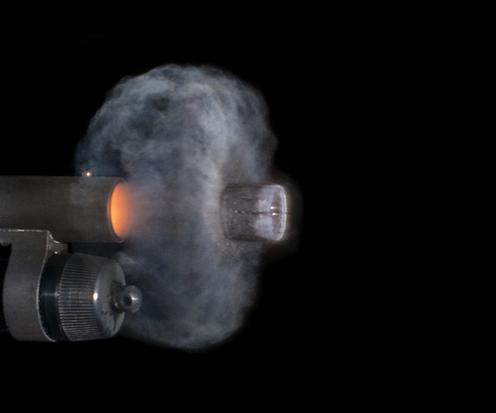
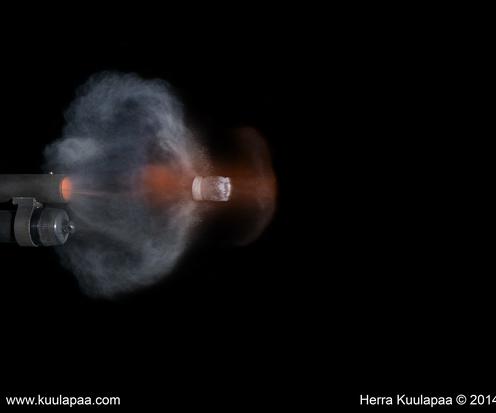

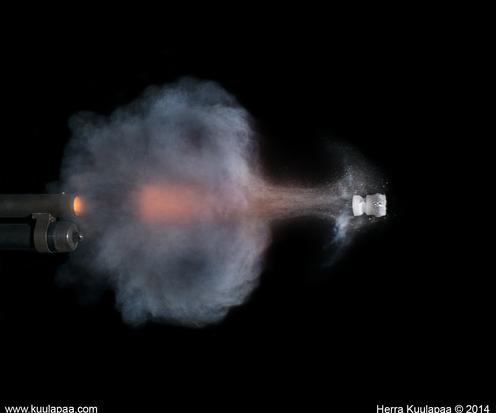
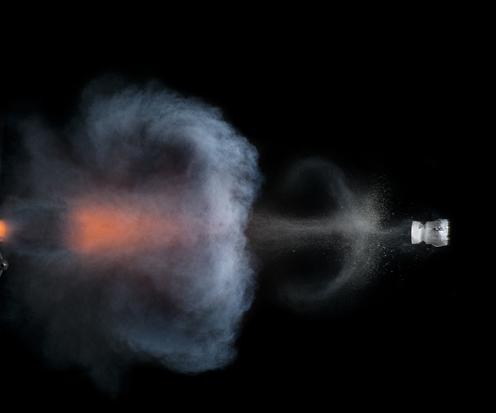

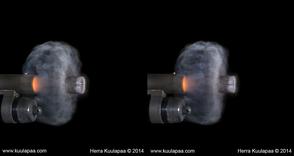
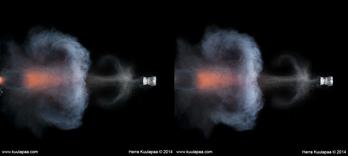
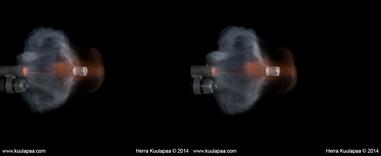
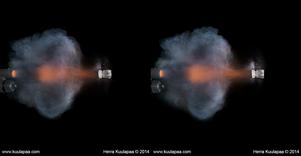
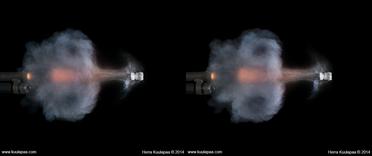


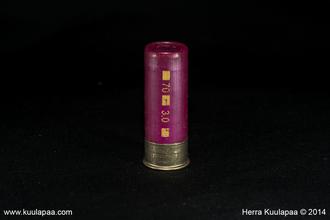
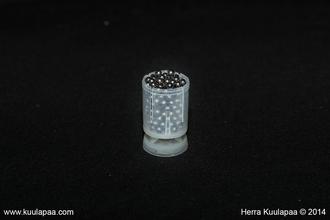

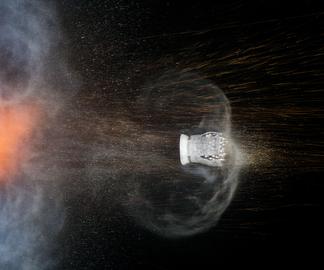
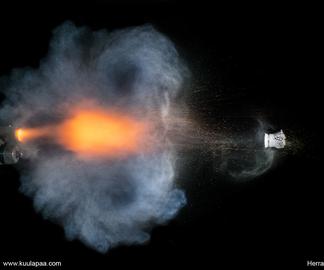
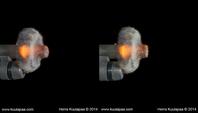

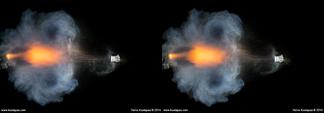
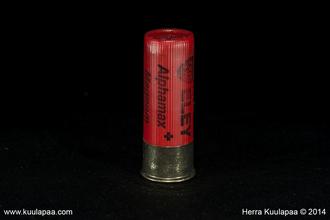
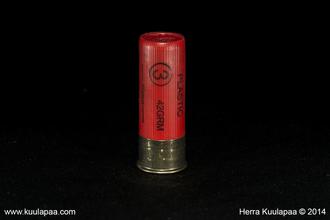
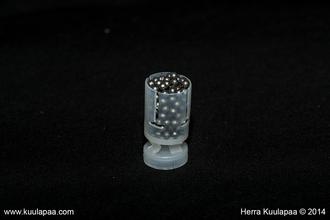
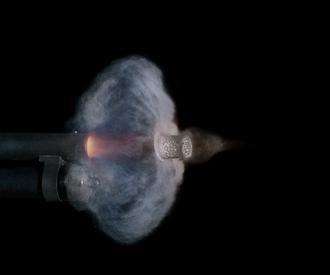

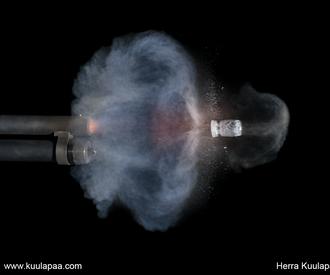

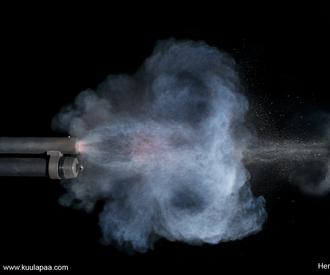

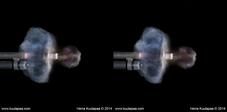
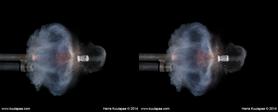
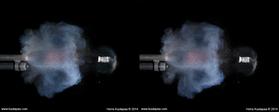
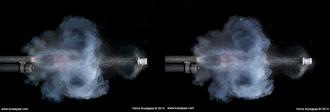
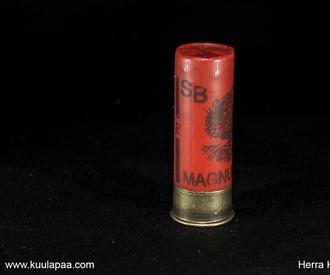
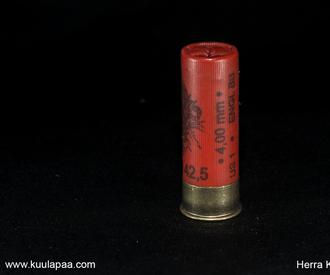
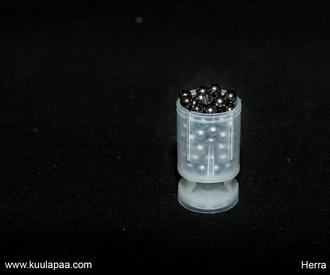
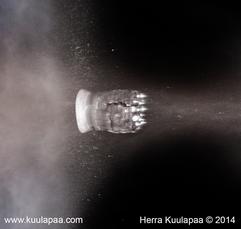
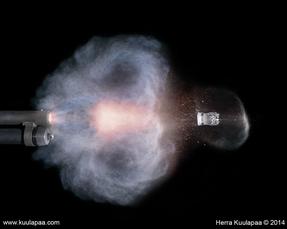
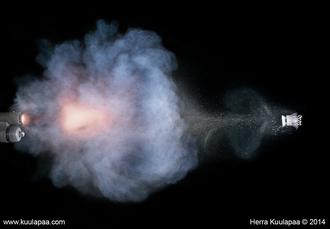
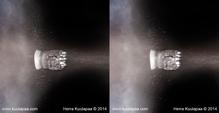
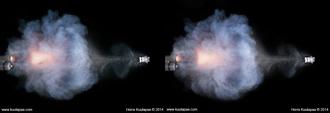
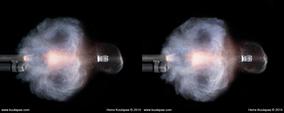

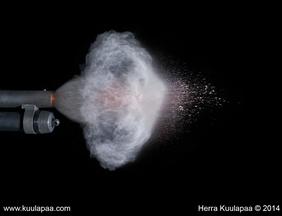
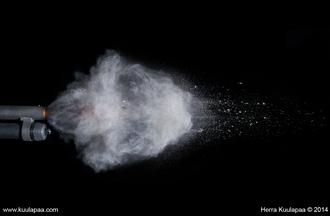
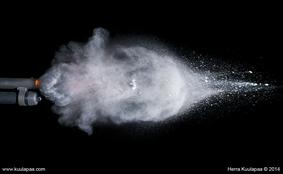

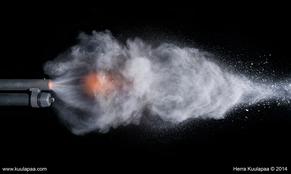





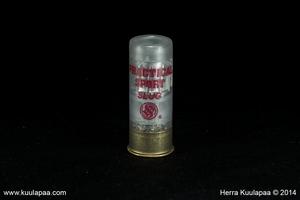
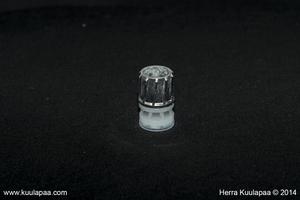

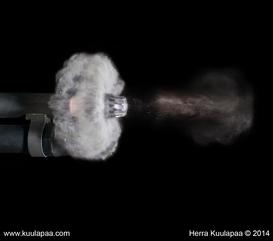
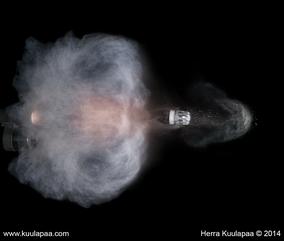
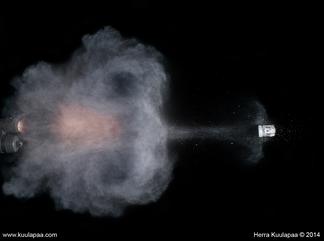
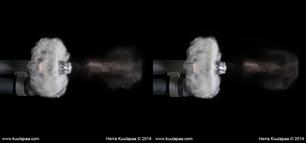
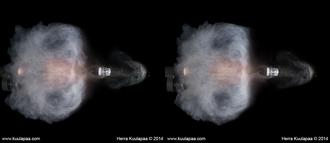


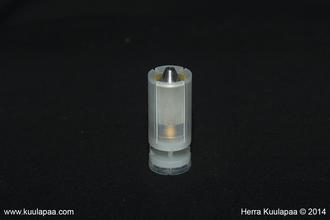
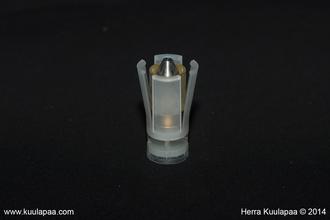
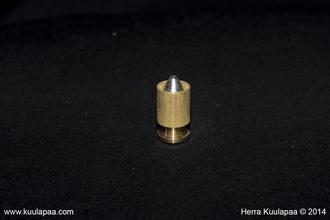
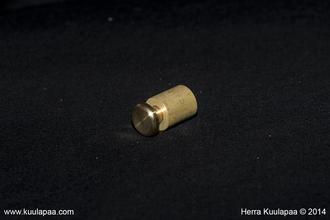
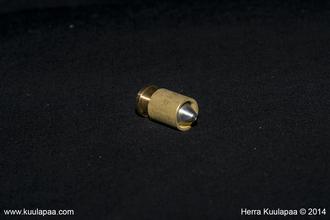
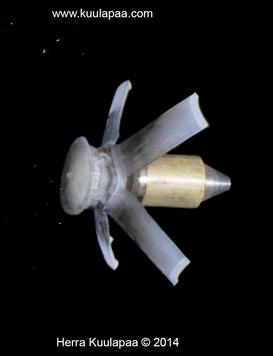

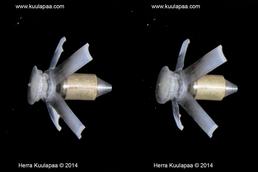
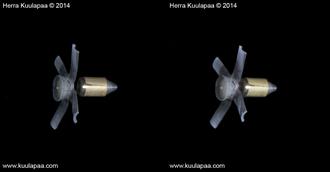
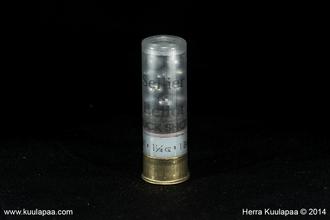
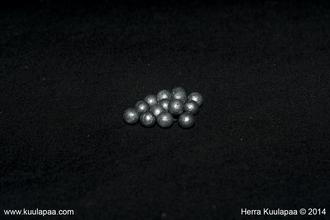
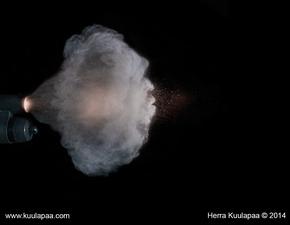
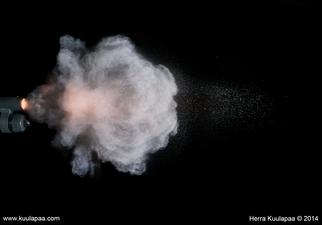
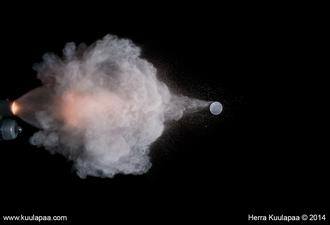
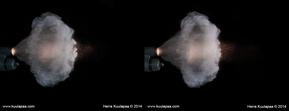
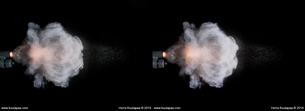
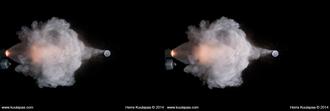

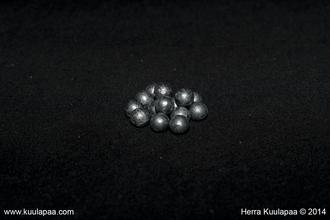

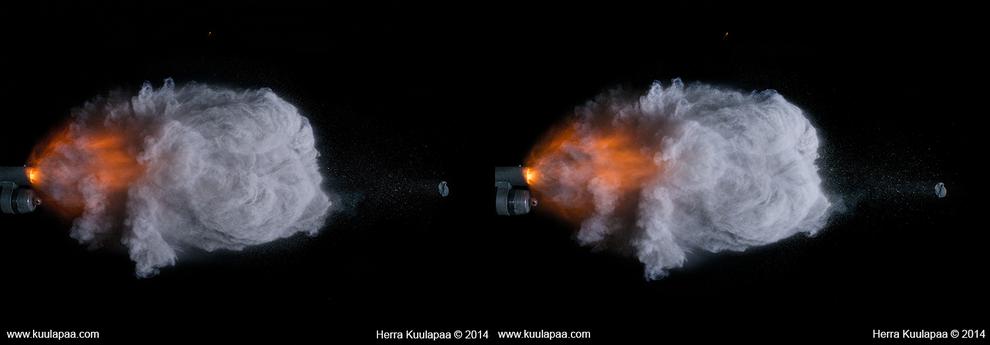
_F_3000_C.jpg)
_F_3000_C.jpg)
_F_3000_C.jpg)
